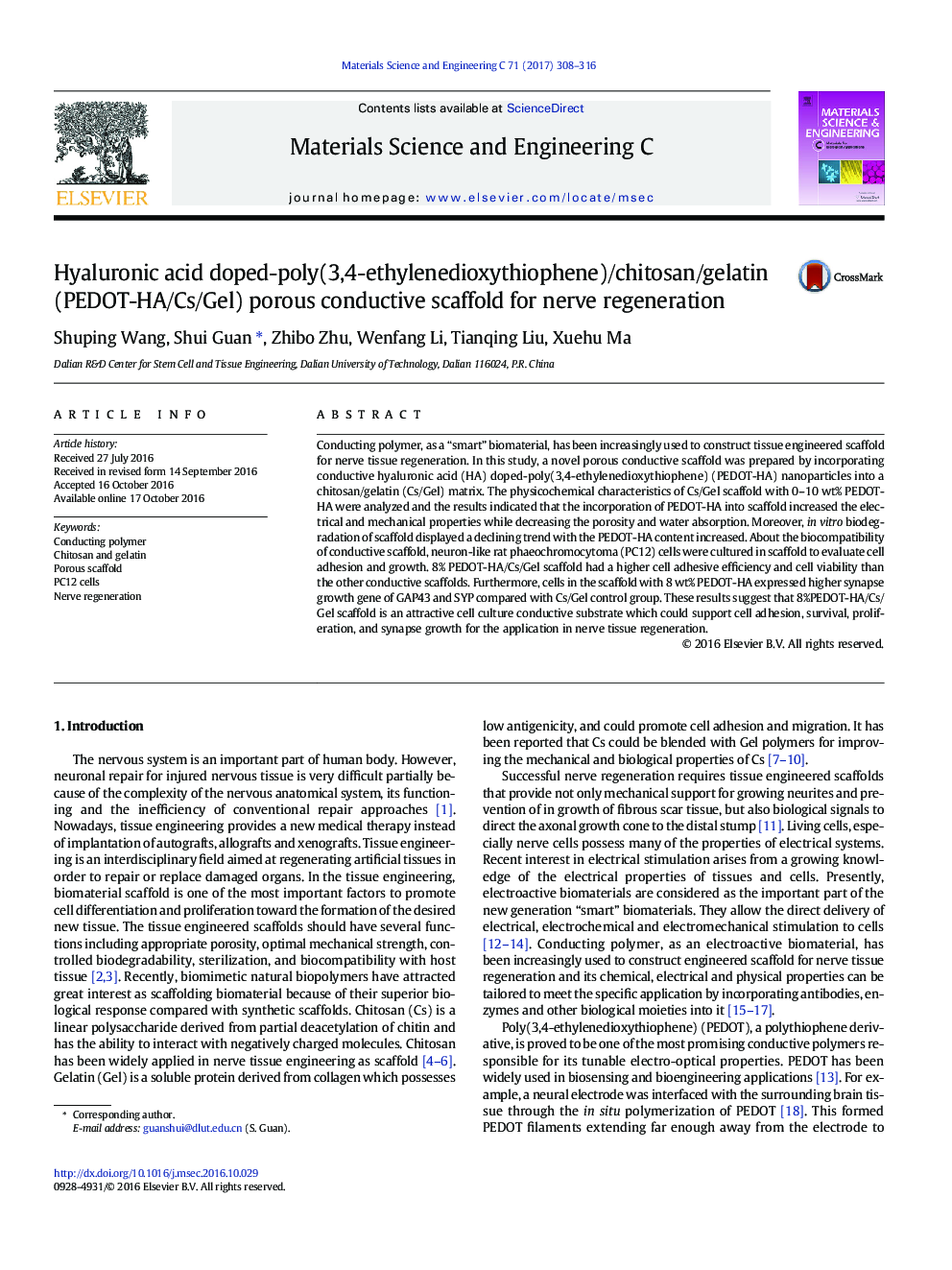| Article ID | Journal | Published Year | Pages | File Type |
|---|---|---|---|---|
| 5434635 | Materials Science and Engineering: C | 2017 | 9 Pages |
â¢A porous conductive scaffold was prepared by freeze-drying method.â¢Conductive scaffold could support PC12 cells adhesion, survival, and proliferation.â¢Cells in conductive scaffold expressed high synapse growth gene of GAP43 and SYP.
Conducting polymer, as a “smart” biomaterial, has been increasingly used to construct tissue engineered scaffold for nerve tissue regeneration. In this study, a novel porous conductive scaffold was prepared by incorporating conductive hyaluronic acid (HA) doped-poly(3,4-ethylenedioxythiophene) (PEDOT-HA) nanoparticles into a chitosan/gelatin (Cs/Gel) matrix. The physicochemical characteristics of Cs/Gel scaffold with 0-10Â wt% PEDOT-HA were analyzed and the results indicated that the incorporation of PEDOT-HA into scaffold increased the electrical and mechanical properties while decreasing the porosity and water absorption. Moreover, in vitro biodegradation of scaffold displayed a declining trend with the PEDOT-HA content increased. About the biocompatibility of conductive scaffold, neuron-like rat phaeochromocytoma (PC12) cells were cultured in scaffold to evaluate cell adhesion and growth. 8% PEDOT-HA/Cs/Gel scaffold had a higher cell adhesive efficiency and cell viability than the other conductive scaffolds. Furthermore, cells in the scaffold with 8Â wt% PEDOT-HA expressed higher synapse growth gene of GAP43 and SYP compared with Cs/Gel control group. These results suggest that 8%PEDOT-HA/Cs/Gel scaffold is an attractive cell culture conductive substrate which could support cell adhesion, survival, proliferation, and synapse growth for the application in nerve tissue regeneration.
Graphical abstractDownload high-res image (218KB)Download full-size image
